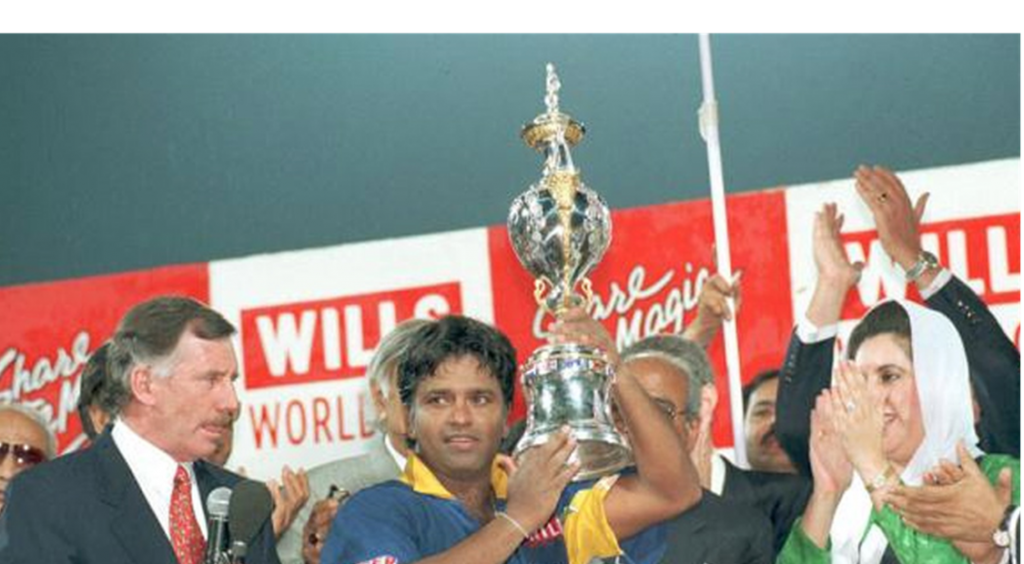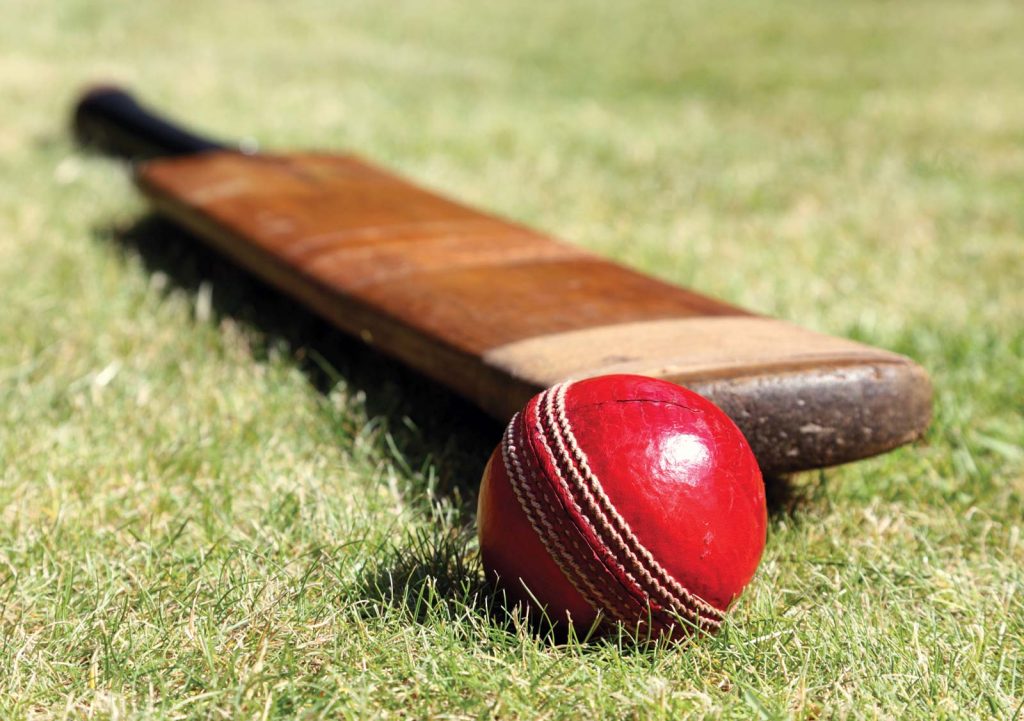Publication for CES Blog by: Amila Premakumara | University of Moratuwa | 4th Year Undergraduate

“That’s it, all the way, to the boundary for a four. What a victory for the Sri Lankans, fantastic effort by them…”
-Tony Greg-
March 17, 1996, was the most joyous evening for millions of Sri Lankans, at Gaddafi Stadium in Lahore with the first world cup triumph over the mighty Australians. Ever since that time, every boy has grown up with a cricket bat and ball in hand, and as a result, furbished an indestructible cricketing culture that has been around for 25+ years. In contrast to the devastating Yorkers by Malinga, the intriguing Doosra by Muralitharan, and the magnificent cover drive played by Kumar Sangakkara, there are several other entertainers that the game has produced, which have captivated the both the Sri Lankans and the world.

However, have you ever considered that this magnificent game is a hodgepodge of analyses, forecasts, preparations, and fool proof executions? more simply, from an engineering and mathematical standpoint? Many would say no. Allow me to explain why it is, more than any other sport, an engineering sport.
Briefing a bit about Engineering…
Generally, engineering is defined as the application of scientific concepts to the construction of structures, machines, and numerous other objects, although this does not capture the complete spectrum. Thus, for the sake of lucidity, we must refer to a more complete and recognized definition.

Engineering is using scientific principles to design or develop structures, machines, apparatus, or manufacturing processes or works utilizing them singly or in combination; or to construct or operate the same with full awareness of their design; or to forecast their behaviour under specific operating conditions, all with regard to intended function, economics of operation, and safety to life.
– Engineers’ Council for Professional Development, United States –
In simpler terms, it is a combined process that incorporates scientific concepts of physics, mathematics, and meteorology into a process that adheres to standards, with enough preparation and oversight to ensure a successful end product. So, the next question is how this could be interpreted in cricket? Let’s find out.
In a Bowlers’ Perspective
Possibly the finest over bowled by a fast bowler in the modern game is the over bowled by Glen McGrath to dismiss England Captain ‘Nasser Hussain’ in the 2005 Ashes series, which has been discussion and admired over a decade and more. preparation and oversight to ensure a successful end product. So, the next question is how this could be interpreted in cricket? Let’s find out.

The graphic depicts the pitch map for the aforementioned. Bowl after bowl pitches in the same length of ‘good’ and on the same line right outside off stump, creating ambiguity in the batsman’s mind about whether to play or leave. Then comes the wicket bowl, slightly pitching up to take use of the pitch’s bounce and grab the edge.
“Absolutely consistent, is he not?
Oh.. and that is it, that’s it , it was just a matter of time, before it gets just a little bit closer. That is the end of the innings for the England Captain. A beautiful delivery from Glen McGrath ”
This Execution of Perfection consists of stages that are critical to the bowler’s success.
- Analyzing the Pitch Conditions (Not all pitches act similarly; green pitches tend to create more seam, whilst dry pitches prefer to promote spin.)
- Analyzing the Surrounding (Humidity, light, wind, and sunshine all have a part in the miniaturization of the cricket ball. As a result, such conditions must be evaluated as well for perfect execution.)
- Analyzing the Batsman (Not all batters approach the game the same way; some are hesitant to short ball while others want to leave the length ball, which must also be considered. Quite easy through technology)
- Discipline (As a bowler, a one-off execution will not guarantee the wicket, as he is expected to consistently set the trap choosing the correct balls, compelling the batsman to take a leap of faith.)
- Execution (This is the ultimatum; with all of the aforementioned prerequisites, the bowler must deliver the trump card perfectly and without error.)

SIMILITUDE
If one pays close attention, it could be recognized that these aspects correlate to the actions that an engineer or project manager would perform throughout an operation. Illustrating from a simple example of a typical building project, aspects of Product. So, the next question is how this could be interpreted in cricket? Let’s find out.
- Preliminary and Feasibility Study
- Considering Alternatives and Finalizing the design
- Initiation
- Continues Improvement and
- Proper Execution Successful Completion as the Ultimatum.
Considering the Role of a Batsman
Unlike in the early days of cricket, all parties engaged in the game now have access to technology for analysis in addition to considerable training. When the bat meets the ball, a batter must guarantee proper stroke timing, placement, striking position, stroke speed, Bowled speed, surrounding circumstances, and accuracy. A little error in one of the aforementioned factors may result in dismissal, especially when the technical ability and expertise of the batsmen are put to the test.
Initially, batsmen were required to adjust to changing circumstances and challenging bowling solely through training sessions and live observations, which resulted in analysis. Typically, each bowler’s strategies are evaluated on their ability to recognize and execute the correct stroke play. As an example, when batters faced perhaps the game’s quickest bowler, Jeff Thomson, who produces amazing bounce while pitching in excellent length, they batted as deep as possible from the crease to gain the advantage of time as much as possible.
With the advancement of technology and its incorporation into the game, participants, especially hitters, now have the benefit and convenience of being able to analyze any bowler by maintaining a data base of millions of bowls bowled in accumulation.


Again, there is a parallel; consider the modelling, designing, and planning that an engineer performs before to and throughout the development of a project. The same evaluation may be made about propelled cricket, where the game becomes increasingly competent as innovation advances. Engineer is an innovator, who provides efficient solutions to unique issues, wouldn’t you say a cricketer is same. If not, how could have we witnessed a ramp shot lofting a Yorker length bowl over the keepers head for a six, caught the cricketing world by storm knowing as ‘Dil’s Scoop’
Technology
Cricket is one of the pioneering sports that has embraced technology to its full potential. From the leather bowl that purchases the seam form the Bernoulli effect through the air medium and the willow bat with spring action providing a precise impact, technological advancements have aided in every judgment consisting in the game. Again, there is, engineering growing to give the best and most realistic experience possible for the game’s audience, but not as internal component takers here. Umpires in the center are often the authority when it comes to game-related decision-making. Regardless of how skilled and technologically sound these individuals are, human mistake is always a possibility, which is why the third umpire and reviewing system through hawk eye, hotspot, Snick-O-Meter, and cameras were invented.

Hawkeye
- Not just in cricket, but also in tennis, soccer, and hauling. 6-7 powerful cameras are mounted on the underside of the stadium roof, tracking the ball from various angles and triangulating the trajectory of the bowl, particularly in leg before wicket situations.
- Developed by Dr. Paul Hawkings, UK and introduced into the game in 2001.

Hotspot
- Recently, new technology has entered the game, assisting the third umpire and analyst in determining the effect on willow or any other component that is difficult to pinpoint visually or audibility.
- Straight forward implementation of ‘law of conservation of energy’ where the heat emission upon impact, is identified.

Snicko Meter
- The very sensitive microphone, which is often positioned in the middle stump, is used to pick up on the nick between the bowl and the bat.
- To begin, technology was employed to provide a full perspective of the audience, which was then utilized to pinpoint the point(s) of impact. Introduced by Allan Pascket in mid 1990s.
To summarize, the cricket game is replete with engineering features and fundamentals, which qualifies it as an engineering sport. While some may argue that every sport makes use of technological innovation to enhance the game’s quality, but they do not always fall into the same category.
To dispel said uncertainty, cricket is distinctive in that it is dependent on analytics, comprehension, and a variety of other external elements in addition to the players’ skill, which is not ideal to address in contemporaneous circumstances. It necessitates some amount of pre-planning and adaptive execution throughout the game, which is susceptible to change since to the game’s duration being lengthier than that of any other form of regular sport. This aspect has resulted in the game’s engineering richness being included with exceptional brains performing admirably with skill, like as the outstanding leg spinner Anil Kumble, who began his career as a professional engineer.

